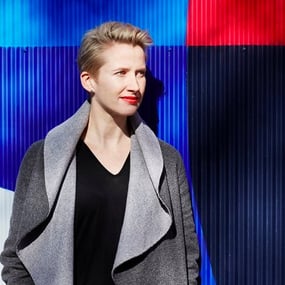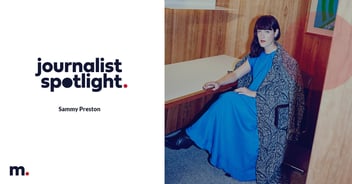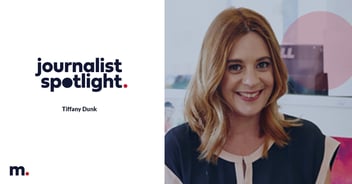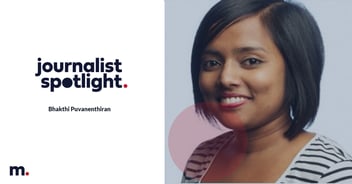Alice Blackwood, Indesign Magazine Editor

Indesign magazine editor Alice Blackwood started out in newspapers, interning at ABC Online, and as a journalist for The Courier Mail, before gradually combining her passions for design and writing by specialising in architecture and design publishing.
Alice says she began her career working half the week at the newspaper and half in a design gallery, learning about the industry.
“I grew up with a knowledge of design because of my mother’s interests. So it was an area that I would naturally move into. I really loved working on The Courier Mail, but hard news wasn’t really my calling,” she says.
“I had a real affinity for feature writing and telling stories, and if I was ever going to devote those skills anywhere it was to support the architecture and design community, and that really aligned with my values.”
Following a stint as a publicist at Melbourne International Design Festival, Alice took up a role at Indesign Media’s Design Quarterly (DQ) magazine, which she describes as the “industry news source” of the architecture and design community, before moving to the media organisation’s flagship title Indesign magazine.
The magazine publishes three times a year, alongside its digital platform IndesignLive. Alice says the “creative direction” is quite different across the two platforms: “Print becomes this very curated experience. That journey as a reader offers moments of illumination and delight, it allows you to dig into a particular article and have a moment of reflection as well. A magazine will resonate with you because of that feeling you get when you interact and engage with it,” she says.
“From advertisers’ perspectives digital has certainly become important in terms of tracking your performance, relative to your investment.
“However, when you’re marketing your brand, it’s not about throwing all your chips in one basket or dwelling on one platform, it’s about finding the right balance between digital and print, and even events. So at Indesign Media we have an ecosystem of products that offers that diversity of brand exposure and audience engagement.”
Indesign Media runs several events throughout the year, including their annual INDE.Awards recognising excellence in design and architecture across the Indo-Pacific region.
One area that Alice describes as a particular “homeground” for Indesign is workplace design, featured in a special issue every year. Alice says that even prior to the pandemic, Australia was paving the way for more flexible working models.
“For many years the office space has been the primary location for where we work. Of course more recently working from home has become that second primary space. We now talk about ‘third spaces’ in terms of other spaces or locations from which we might work. They could be outdoor spaces, for example, or library spaces, your local park, or even previously disused spaces, like laneways, within urban precincts,” she says.
“What we’re starting to understand is that as we slowly transition back into working in the office, it’s not necessarily going to go back to normal, and may never go back to what we considered to be normal 18 months ago.
“What we do know is that what brings workers together in the office, and what might actually entice them back into the office again is the opportunity for collaboration, that sense of community, and importantly the connectivity that we get with one another. I think we can all speak to the fact that in lockdown those are the things we all miss.”
Indesign’s latest magazine edition is an ‘Education and Urbanism’ special issue.
Alice said the content brings home the importance of schools, beyond what they provide to students and teachers in the classroom.
“Community and ‘place’ have never been more important to us. In bringing this issue together I observed a lot of examples of really amazing schools across all levels, from preschool right through to tertiary, actively building social connections within our towns and cities. It’s about the amenities, for example, performing arts and other cultural facilities, that they provide — not only for students and teachers, but for their local communities. It’s about how school facilities bring their community close around them,” she says.
“It can also be about landmark value, because having landmarks in your local community is very important to your attachment to ‘place’ and also how you come together and engage with others around you.
“Our country’s architects and designers are actively taking a lead role in defining how that is, and there’s a lot of research out there among our leading architecture and design firms looking at how education is married with urbanism, and how the two can work hand in hand.”
Alice’s pitching preferences:
“We speak to a very distinct audience. I get a lot of pitches that aren’t quite the right fit for what interior designers or architects might want to read about, because of their expert knowledge. We tend to avoid trends-based pieces, for example, as our readers are really the ones defining new directions in design. They’re working ahead of the trends. We really look to take that conversation higher.
“If I’m looking for a pitch that would fit in print, I’m looking for something that is very ideas led. Because I find that you can get your everyday news and stay up to date in digital very easily day-to-day, but what makes print different is that it is distinctly ideas led.
“In terms of what we cover, it could be anything from projects to people profiles, events, design-led initiatives and news, and most certainly new product designs and innovations as well.”




